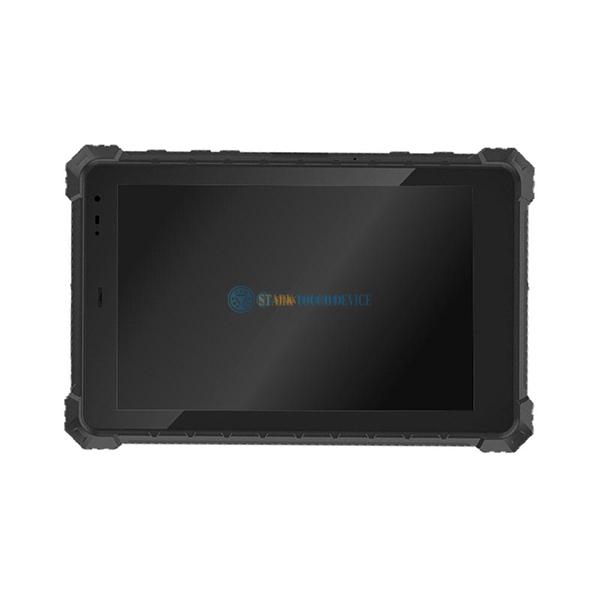Welcome STARK TOUCH DEVICE!
Solutions
Deployment and usage methods of edge computing tasks on industrial control computers
Practical Deployment Methods for Edge Computing Tasks on Industrial Control Computers
Edge computing has become a critical technology for industrial control systems, enabling real-time data processing and reducing reliance on centralized cloud servers. When deploying edge computing tasks on industrial control computers, several key methods can ensure efficiency, reliability, and scalability.

Hardware Selection and Configuration
Choosing the Right Industrial Control Computer
The foundation of edge computing deployment lies in selecting an industrial control computer that meets the specific requirements of your application. Consider factors such as processing power, memory capacity, storage space, and network connectivity. For instance, if your application involves real-time video analytics or complex machine learning models, opt for a computer with a high-performance multi-core processor and sufficient GPU acceleration capabilities. On the other hand, for simpler tasks like sensor data aggregation, a computer with moderate processing power and ample storage for historical data may suffice.
Ensuring Robust Network Connectivity
Edge computing relies heavily on network connectivity to transmit data between devices and the cloud. Industrial control computers should support multiple network interfaces, including wired Ethernet, wireless Wi-Fi, and cellular connectivity (e.g., 4G/5G). This redundancy ensures uninterrupted data flow even if one network fails. Additionally, consider implementing network protocols like MQTT or CoAP for efficient data transmission, especially in low-bandwidth environments.
Software and Platform Deployment
Containerization for Flexibility and Portability
Containerization technologies like Docker and Kubernetes have revolutionized software deployment in edge computing. By encapsulating applications and their dependencies into lightweight containers, you can ensure consistent performance across different industrial control computers. This approach simplifies software updates, reduces compatibility issues, and enables rapid scaling. For example, you can deploy a containerized machine learning model on multiple edge devices without worrying about underlying hardware differences.
Leveraging Edge Computing Platforms
Several open-source and commercial edge computing platforms are available to streamline deployment. These platforms provide tools for managing edge devices, orchestrating workloads, and securing data. When selecting a platform, consider its compatibility with your industrial control computers, ease of use, and support for your specific applications. Some platforms also offer built-in analytics capabilities, allowing you to process data locally before sending it to the cloud.
Data Management and Security
Implementing Efficient Data Storage and Processing
Edge computing enables local data storage and processing, reducing the need for constant cloud connectivity. However, managing large volumes of data on edge devices can be challenging. Implement efficient data storage solutions, such as solid-state drives (SSDs) for fast read/write speeds, and consider data compression techniques to minimize storage requirements. Additionally, use edge analytics to process data locally and extract actionable insights, only sending relevant information to the cloud for further analysis.
Ensuring Robust Security Measures
Security is paramount in edge computing deployments, as edge devices are often exposed to physical and cyber threats. Implement strong authentication mechanisms, such as multi-factor authentication, to restrict access to edge devices. Encrypt data both in transit and at rest to prevent unauthorized access. Regularly update software and firmware to patch vulnerabilities and deploy intrusion detection systems to monitor for suspicious activities.
Real-World Application Scenarios
Industrial Automation and Control
In industrial automation, edge computing can significantly improve response times and reduce network congestion. For example, in a manufacturing plant, edge devices can process sensor data from production lines in real-time, detecting anomalies and triggering corrective actions immediately. This local processing minimizes the need for constant communication with the cloud, ensuring uninterrupted operation even during network outages.
Smart City Infrastructure
Edge computing plays a vital role in smart city initiatives, such as traffic management and environmental monitoring. Edge devices installed at traffic intersections can analyze real-time video feeds to detect congestion and adjust traffic signals accordingly. Similarly, environmental sensors deployed throughout the city can process air quality data locally, providing immediate alerts for pollution spikes without relying on cloud-based analytics.
Healthcare and Remote Monitoring
In healthcare, edge computing enables remote patient monitoring and real-time diagnostics. Wearable devices equipped with edge computing capabilities can process vital signs data locally, alerting healthcare providers to potential issues before they become critical. This approach reduces the need for frequent hospital visits and improves patient outcomes.


